Yet Another Internet Opinion About the Vision Pro
The Apple Vision Pro is a cool device that’s fun and easy to use. But it’s still a solo device and one that doesn’t quite know what problem it’s solving. Also, The Roundup is back this week with a few news tidbits of questionable usefulness.
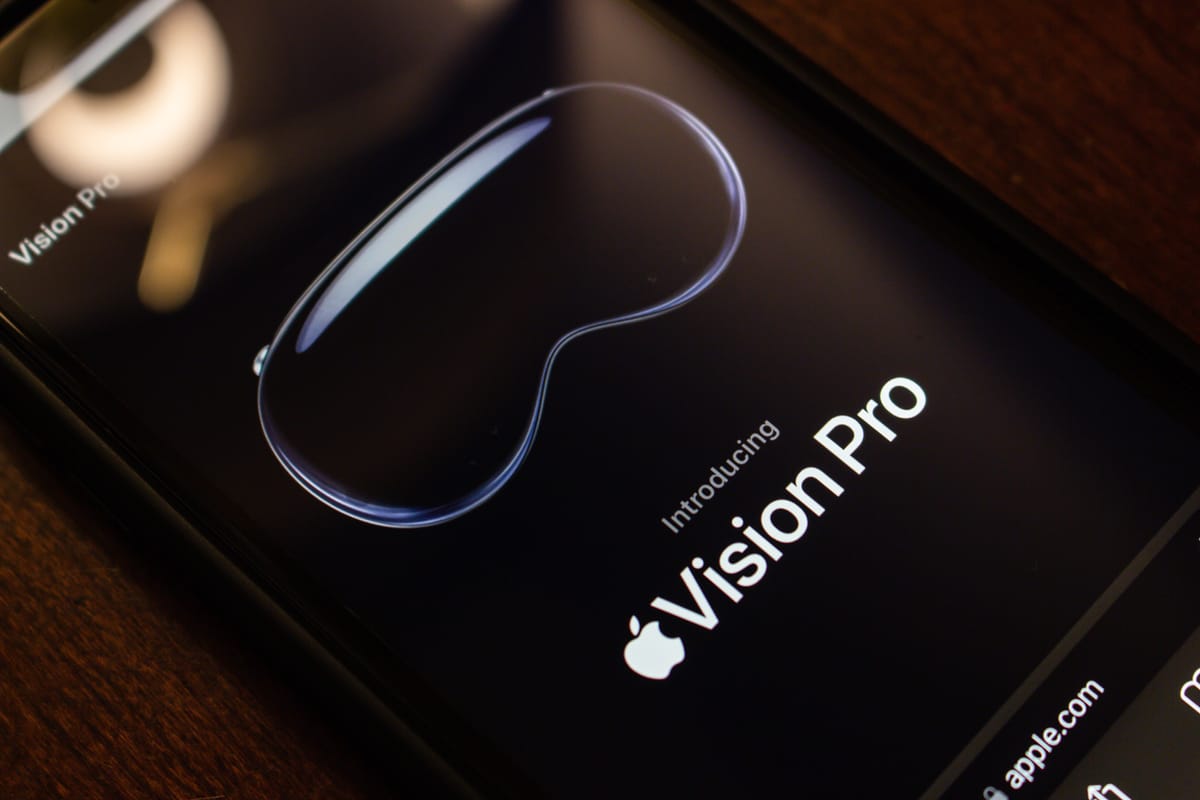
In last week’s newsletter I wrote about the Vision Pro and mentioned that I had scheduled a demo for Saturday. I duly completed said demo and have some additional thoughts, so I thought, “why not write yet another internet opinion about the Vision Pro?” I’ll try to not be too boring and/or obvious, and I promise to get back to more standard design work next week.
Also, as promised there is an audio version available; scroll on down toward the bottom if you'd prefer to listen instead of read.
Shortly after I arrived at the store I met Pat, who would be running my demo. He took my glasses to check the prescription so that they could fit the correct Zeiss optical inserts. I was a little concerned that there would be a problem, seeing as how I have astigmatism. Fortunately, that wasn’t the case. Next, we ran through a few steps using my iPhone to conduct a face scan for the light seal fit. The process is pretty similar to setting up FaceID, and required two passes to complete. Everything went smoothly and a few minutes later the headset was whisked to our table on a literal platter.
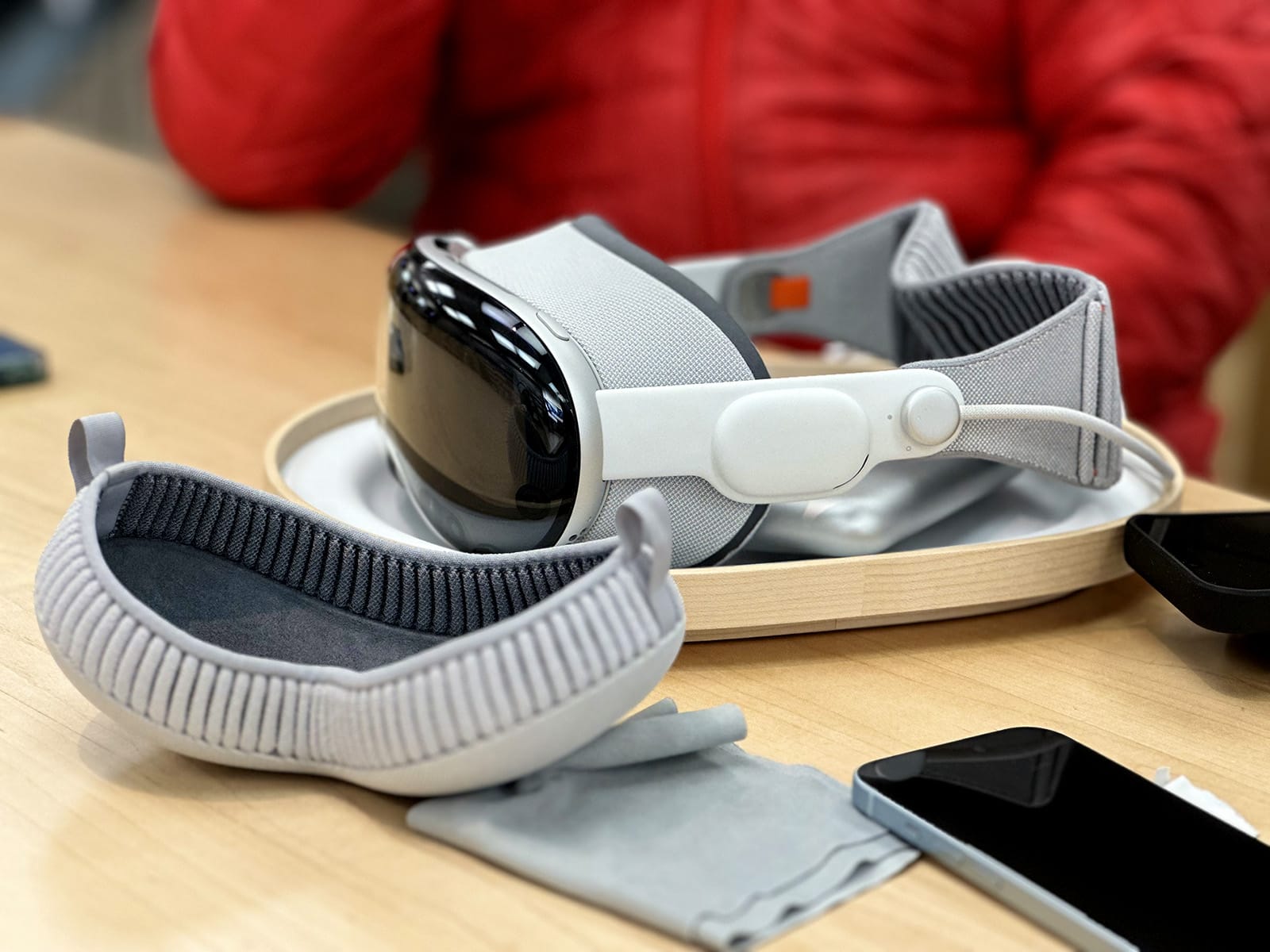
Pat ran through the few gestures and an overview of how the Vision Pro works, and then showed me how to pick it up and put it on. Naturally, I screwed it up first time and bumped the magnetically-attached light seal off. After a quick fix I was able to fit the headset and begin the demo.
In terms of fit, my impression seems to match that of most reviewers I’ve seen. It’s not uncomfortable per se, but it’s also not light and you will definitely not forget you’re wearing this thing. The gestures are pretty simple and seemed intuitive enough, but I still struggled a little to correctly recall and use them all. But I think that it would become pretty natural after an hour or so of usage.
My demo consisted of the photo app, including a couple immersive panoramic photos, learning to navigate the interface and place windows, using Keynote to rehearse a presentation, some spatial photos and videos, and a 3D movie clip.
I thought the visuals were great and the sound was fine. The panoramic photos were especially impressive, though I found the spatial photos and videos to be just a bit too crisp. They felt almost as though I was inside a three-dimensional pop-up greeting card rather than a photo. The videos were better on this front, but I still felt a sense of detachment from the visuals. I have a debilitating fear of heights (no, I will not go on the roller coaster with you) but I’ve felt more uncomfortable in traditional video games than I did while standing on a virtual tightrope high above a mountain gorge in the Vision Pro.
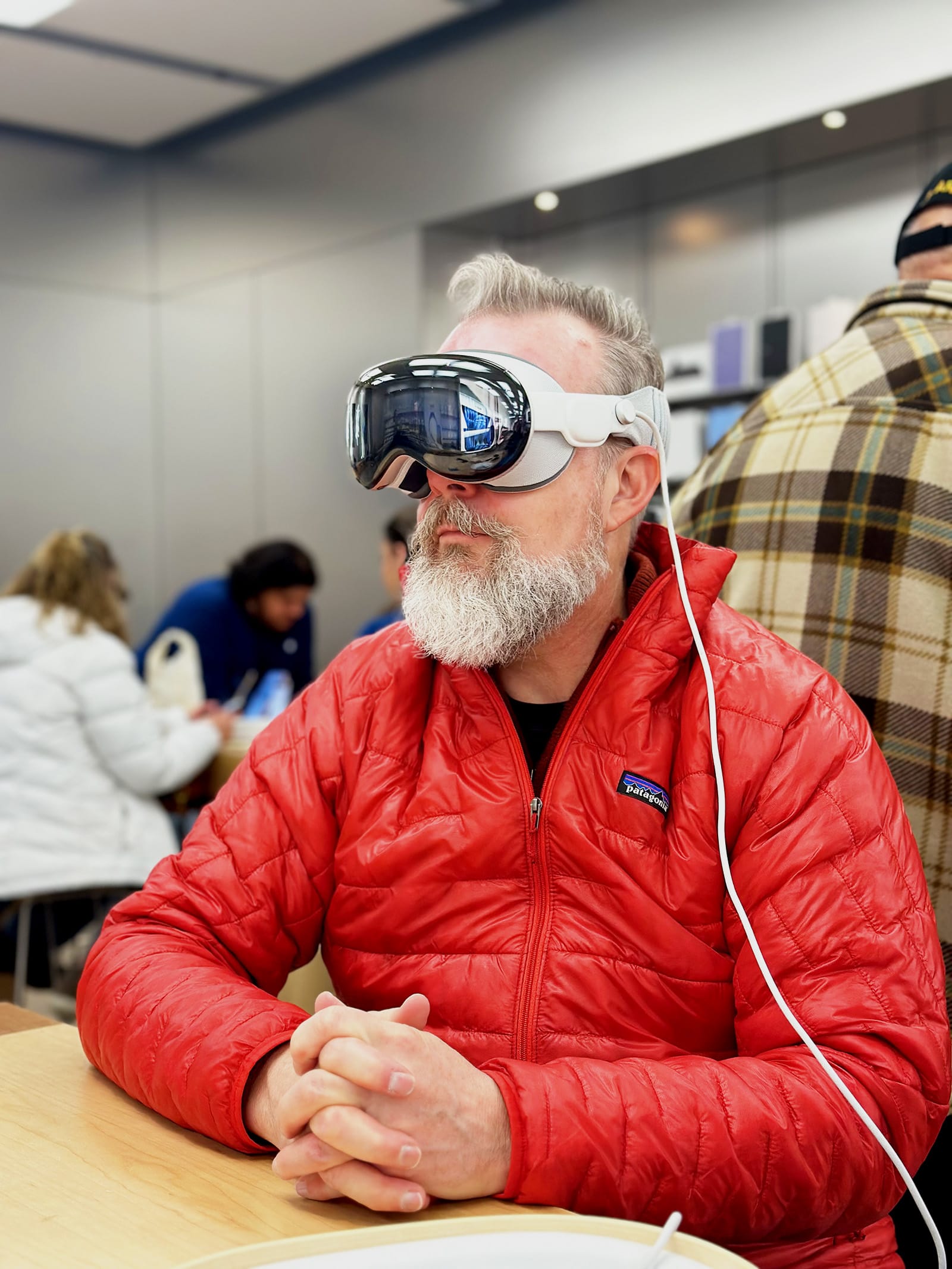
The Keynote rehearsal was also kind of neat and well done, allowing the user to choose between a conference room and a stage. I chose the stage and - unsurprisingly - found myself standing on a stage in front of an empty theater, complete with stage lights. The current and next slide were displayed in front of me, and when I turned around I could see the slide projected on a giant theater screen. While it was kind of cool to experience the scene behind me, it’s a bit superfluous.
But while I found the demo a little fun, the reality is that I will never present like this. The audience would think you're an idiot for wearing a Vision Pro on stage, and they would be correct. Most of us will continue to conduct our presentations the old-fashioned way, so rehearsing with a headset seems to have limited utility.
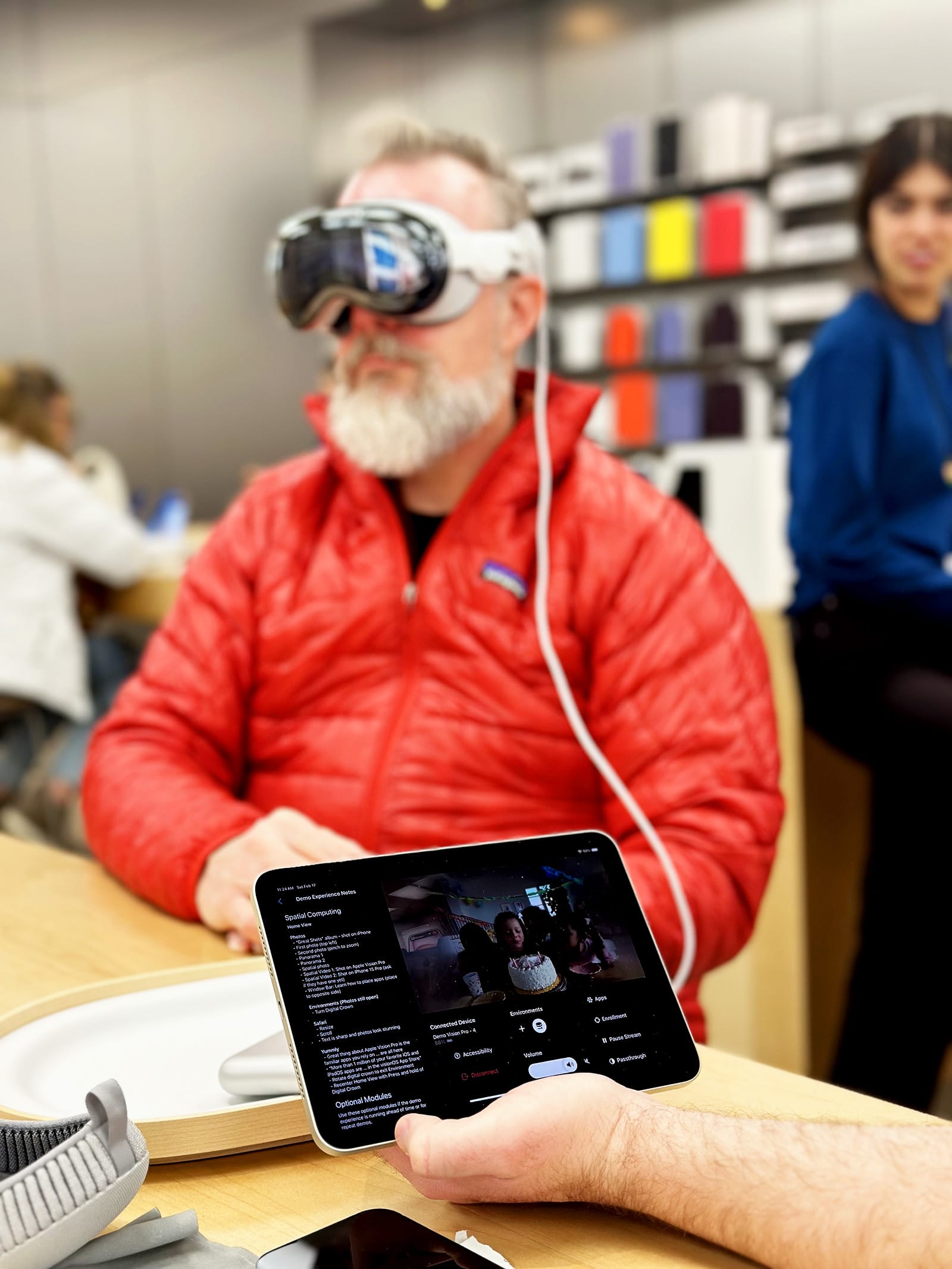
I didn’t get to try typing, but I’m not sure how well it would work. I think that using a regular keyboard would be tricky, even with the pass-through cameras and I can’t imagine trying to type anything of substance on a virtual keyboard.
So while the demo was cool, I still struggle to see what problem the Vision Pro solves. Its weight and two-hour battery life limit its use as an entertainment platform and I don’t see how using it for calls or meetings is better than Zoom or FaceTime. In fact, New York Times reviewer Brian X. Chen found that using the Vision Pro digital avatar “terrified children during a family FaceTime call.”
Probably not what Apple was going for.
Last week I wrote, "It's telling that most of the Vision Pro marketing imagery shows single people; there are no families watching a movie or friends catching a game," and the demo hasn’t changed my mind. Chen and other reviewers seem to feel the same – the Vision Pro is a solo device. You’re not going to watch a family movie with this and an office full of Vision-Pro-wearing coworkers sounds like something from nightmare. And I don’t see any way that an enclosed headset competes with the HoloLens for industrial applications.
I might see myself using the Vision Pro for research and note-taking, especially if the voice controls work well. Having more space than a traditional desktop for reading, reviewing, copy/paste/clipping, and summarizing could be handy, but there is no way I’d try to write and edit a 1,500 word article on it.
I didn’t get sick while using the Vision Pro, but I was sitting the entire time. Other reviewers have gotten nauseated while up and moving around, and Apple recommends taking breaks to prevent motion sickness. I did notice a bit of a headache coming on near the end of the demo, but it’s hard to tell if that was due to the Vision Pro itself.
None of this is to say that the Vision Pro is useless. It’s a first-gen product in a tech niche that hasn’t fully found its footing. Could I see myself being interested in a third- or fourth-gen product? Perhaps. But I also wonder if the wearable headset is destined to remain a niche no matter how nifty the products are.
The Roundup
I neglected The Roundup last week, but never fear! The pointless collection of random news is back, baby!
ChatGPT Lost Its Shit This Week
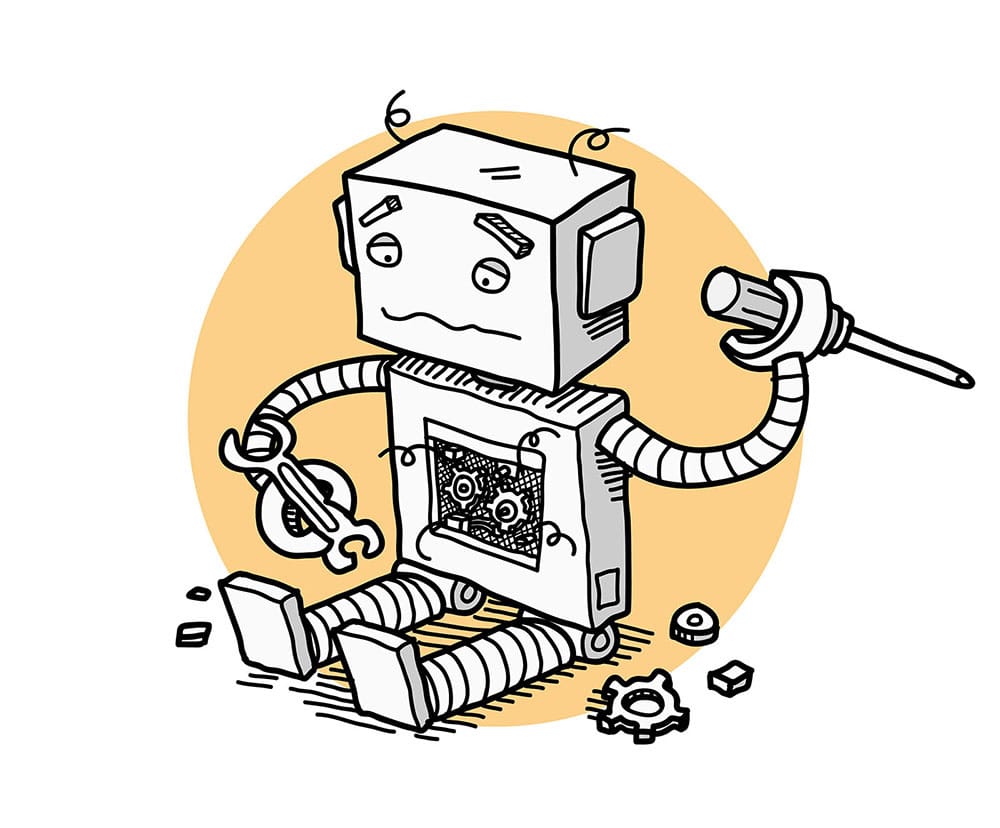
Earlier this week ChatGPT began to have some, er, problems. Some users reported that everyone’s favorite chatbot was giving some pretty bizarre responses, describing the results variously as, “having a stroke,” “going insane,” and “losing it.” By Wednesday morning the OpenAI status page reported that “ChatGPT is operating normally.” Still, this highlights some of the risks involved in relying too heavily on an over-hyped, poorly-understood, early-stage technology.
Even Google Employees Know Their Branding is Trash
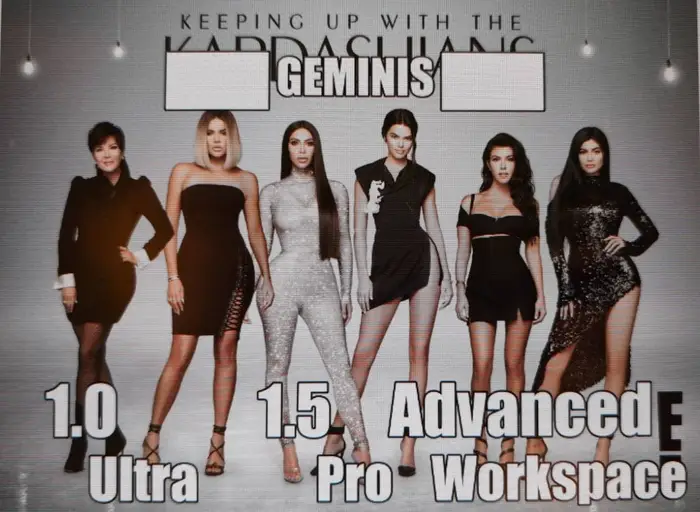
You’ve probably seen the news that Google released their ready-for-prime time (lol) AI tool Gemini (née Bard). You may have missed that they also launched Gemini Advanced - not the same as Gemini Ultra - as well as Gemini 1.5, Gemini for Workspace, Goose, and now Gemma.
Even Google employees just can’t anymore, have taken to using memes to express their utter confusion at Google's asinine "strategy." To be fair, Google’s product naming has always been kind of insane (gold star if you can name all of their chat products). This also seems like a good time to pay the Google Graveyard a visit.
Can We Blame This on Steampunk Hipsters?
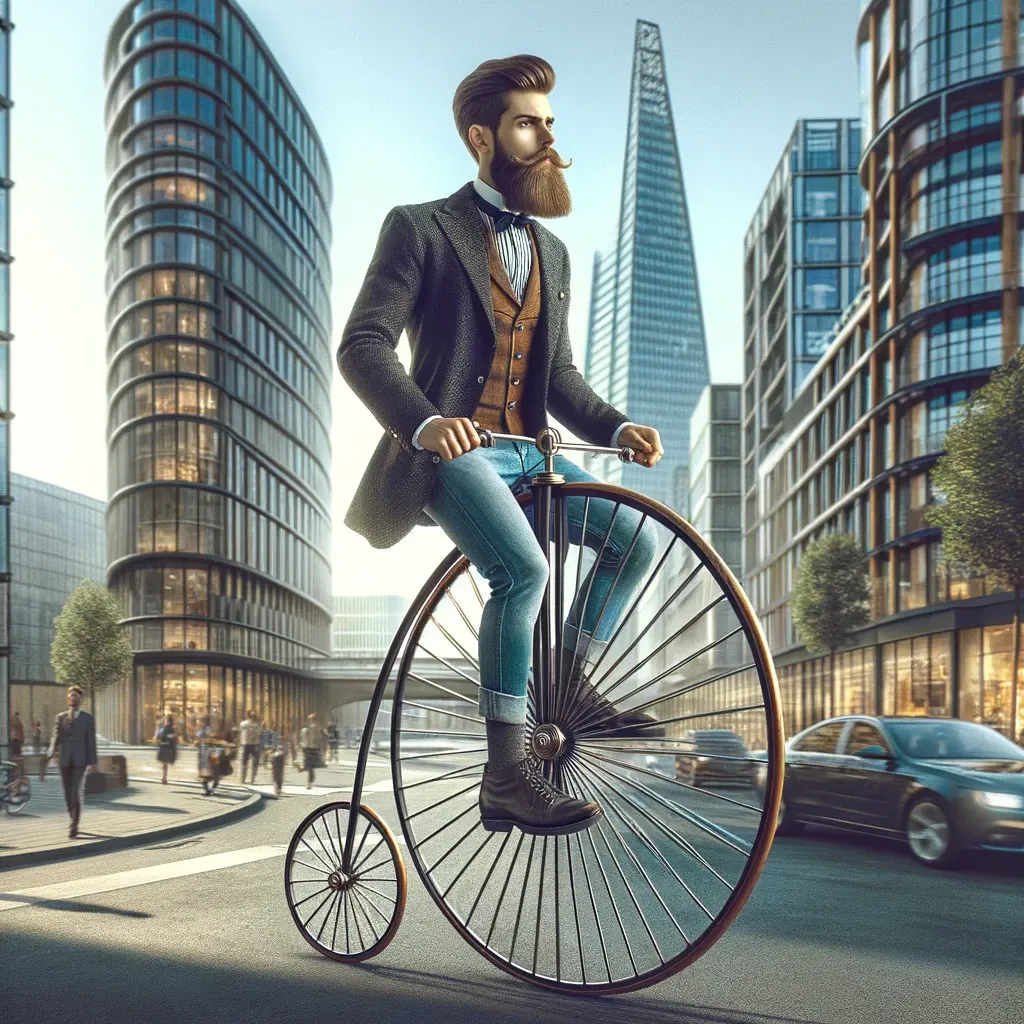
I’ve been going a little HAM on the tech side of things over the past few weeks, and promise that I have some design articles in the queue. But for today I’ll leave you with this head-scratcher, mostly because it mentions bicycles and this is opening weekend for the Spring Classics.
A recent study concluded that products branded with “vintage” typefaces were perceived to be safer. To be fair, I didn’t read the entire study but it’s not clear to me why one would think that older products – including bicycles and cosmetics – would be safer than modern ones. But whatever, there is zero chance I’m trading my sweet, 22-speed carbon bike for a one-speed with questionable structural integrity.
